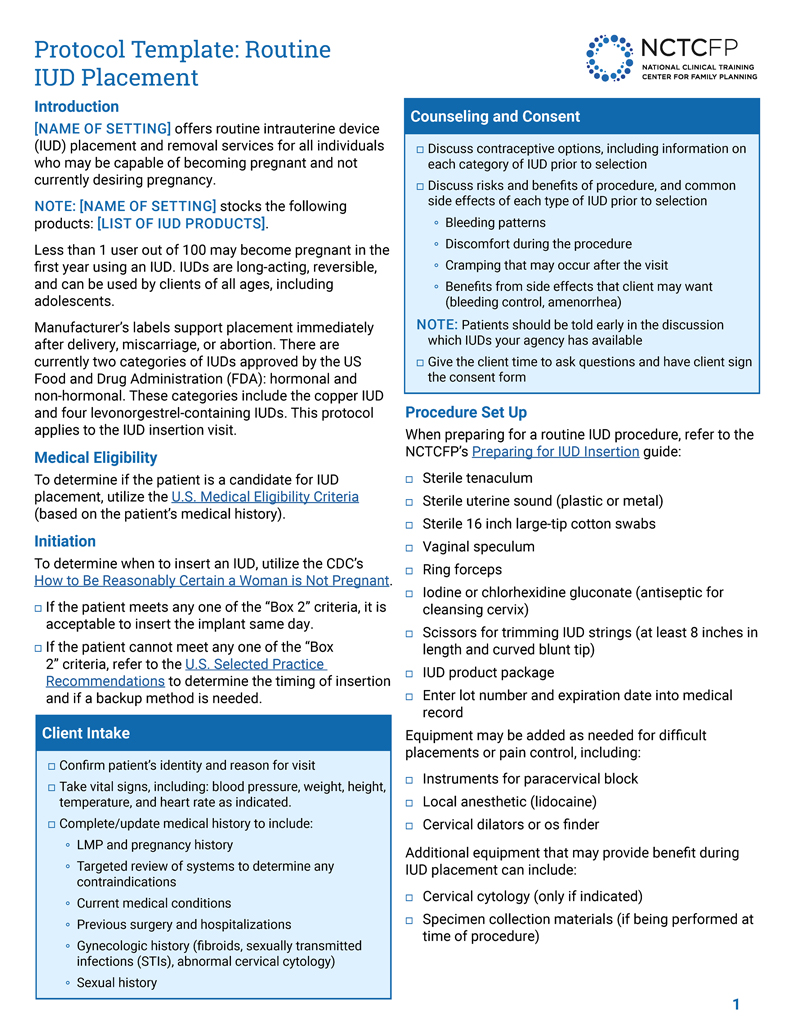
Intrauterine contraception (IUC) is the most commonly used, FDA-approved long-active reversible contraception. People who are actively trying to prevent a pregnancy appreciate it for its efficacy, ease of use, safety, and cost-effectiveness.
The CTC-SRH has developed a suite of products, including a series of e-learnings, tools, and job aids, to support clinics and clinicians in their preparation to confidently discuss IUC and ensure safe and equitable access for clients.
A series of focused micro-learning opportunities focused on providing IUC
0.25 continuing education credits (CNE) are available for each of these activities. To obtain continuing education credits, participants must register and successfully pass a quiz for this activity. For further information and/or to register, visit www.HealthEKnowledge.org.

Intrauterine Contraception Algorithms
A set of job aids that can be used by providers for reference when IUC is the preferred method of contraception by clients.

Protocol Template for Routine IUC Placement
A template with key decision points that can be tailored for individual clinic use.

